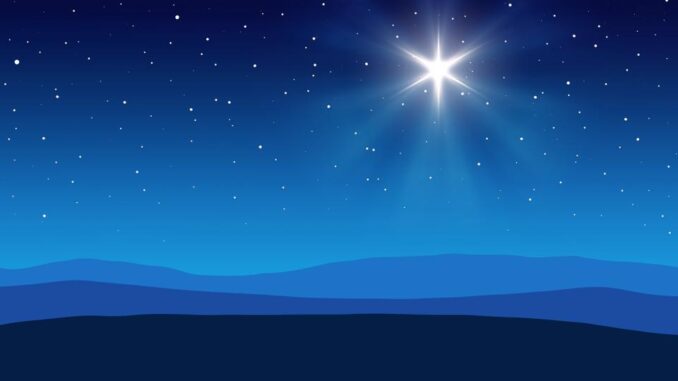
The two largest planets in our solar system are coming closer together than they have been since the Middle Ages, and it’s happening just in time for Christmas — hence the nickname of the “Christmas Star.”While it’s not an actual star, the two planets will certainly make a bright splash in the night sky.
On the night of December 21, the winter solstice, Jupiter and Saturn will appear so closely aligned in our sky that they will look like a double planet. This close approach is called a conjunction. The fact that this event is happening during the winter solstice is pure coincidence, according to NASA.
“Alignments between these two planets are rather rare, occurring once every 20 years or so, but this conjunction is exceptionally rare because of how close the planets will appear to one another,” said astronomer Patrick Hartigan, a professor of physics and astronomy at Rice University in Houston, in a statement.
The event is set to take place Monday, which also marks the Winter Solstice, bringing the shortest amount of daylight and the longest night.
The event has been dubbed the “Christmas star,” because some astronomers have theorized the “Star of Bethlehem” could have been a rare conjunction involving both Jupiter and Saturn.
“This will still be quite a striking sight, but you will need to look fast as both planets will set shortly after sunset,” the National Aeronautics and Space Administration’s website says.
Those looking to see the star will want to look above the southwestern or western horizon after sunset, experts said.
Here are some viewing tips from NASA:
- Monday night, find a spot with an unobstructed view of the sky, such as a field or park, as the two planets can be seen from most cities nationwide
- Look into the southwestern sky about an hour after sunset, which for Chicago is 4:24 p.m. Monday.
- If you looked before Monday, you could have seen that Saturn will be slightly fainter and appear just above and to the left of Jupiter. During the “Great Conjunction,” Jupiter overtakes Saturn and the two reverse positions in the sky.
- Other planets are also potentially visible during the event, including Jupiter’s four large moons orbiting the planet. Binoculars or a small telescope could aid in seeing the moons, NASA advised.
“Throughout the first half of December 2020, you will be able to see these two planets appearing to draw closer together each night,” the planetarium’s website reads. “The best time to see them is about an hour after your local sunset time. At Chicago’s latitude, look to the southwest to see two close objects fairly low in the sky. The brighter one is Jupiter. The dimmer one is Saturn.”
Though conjunctions happen roughly every 20 years, Monday’s event will be historically close.
It will be the first Jupiter-Saturn conjunction since 2000, but the first time the planets will have been so close since 1623. It will also be the first time such a close conjunction has been observable since 1226, according to EarthSky.


